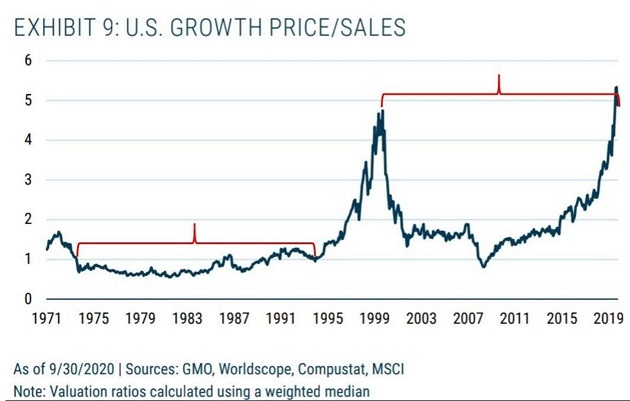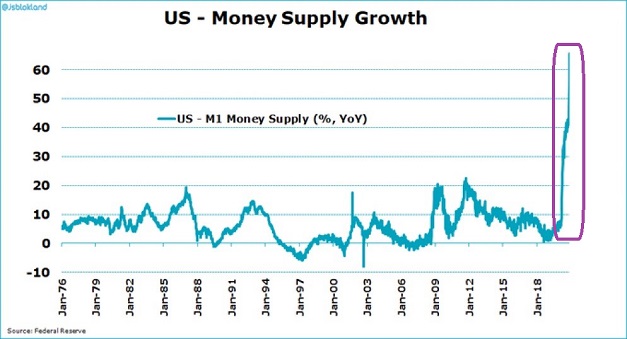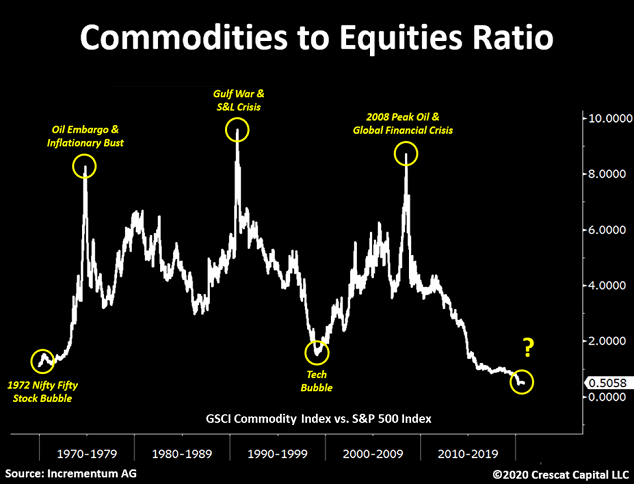The late 1990s represented a period in history when investors began paying ridiculous premiums to own growth stocks. After the stock bubble burst in 2000, growth stocks in the Nasdaq 100 collectively crashed 80%.
In 2020? The investment community is at it again.

This time, however, participants have the Federal Reserve and federal government’s explicit backing. Government has created 60 additional cents for every dollar that existed at the start of the year.
They call it liquidity. We call it “money printing.”

Money printing can continue to support stock prices for as long as investors are inclined to speculate. Indeed, at present, a seemingly endless supply of dollars is overwhelming a limited number of shares.
On the other hand, unchecked dollar creation may lead to dramatically higher living costs (a.k.a. “inflation”). And if that occurs, one might do better with commodities than he/she will do with hyper-valued stocks.
Oil, gas, copper, aluminum, corn, soybeans, cattle, coffee, lumber. A basket of commodities is cheap when compared to a basket of stocks.

Would you like to receive our weekly newsletter on the stock bubble? Click here.
